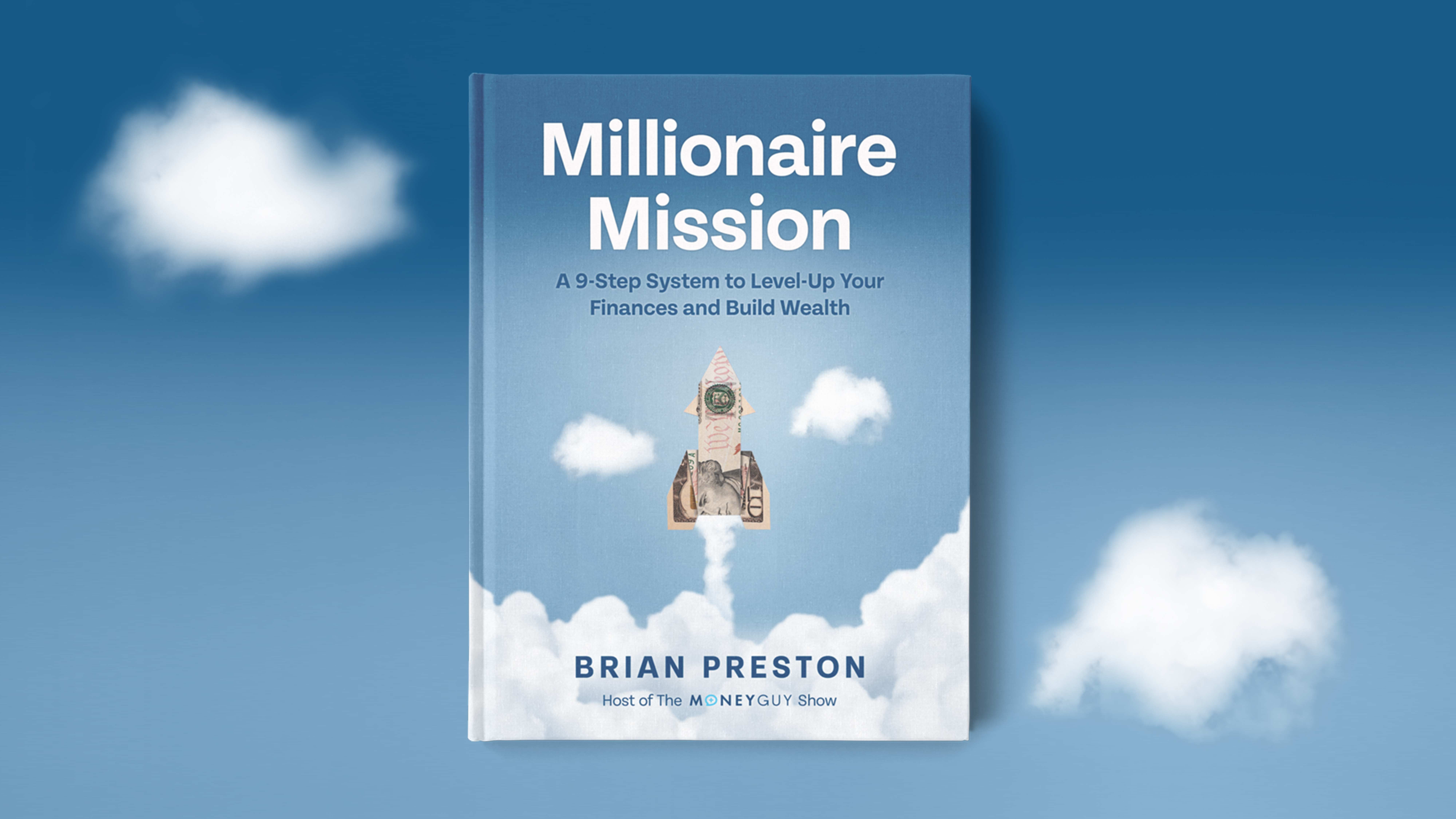
Change your life by
managing your money better.
Subscribe to our free weekly newsletter by entering your email address below.

Subscribe to our free weekly newsletter by entering your email address below.
The financial landscape in the United States has undergone some big changes this year, and I am so excited to talk about them. There’s been sweeping new policy and general market craziness, making for a year of ups and downs.
We’re going to look back at some of the most significant financial measures of 2025, talk about where we may be headed, and discuss how you can better prepare your financial life going forward.
The market is often seen as a barometer for investor sentiment — reflecting not just economic realities, but also anticipation and emotional responses to market news. And there was certainly no shortage of news in 2025.
Key Takeaways:
Learn more:
The job market has had its own share of volatility this year.
Fed Chairman Jerome Powell described the current state as a “curious balance,” meaning both supply and demand have declined — fewer job openings and fewer workers moving between positions.
What You Can Do:
Learn more:
Inflation continues to be a key concern for American households.
A common misconception is that “inflation going down” means prices are falling — that’s not true. Inflation measures the rate of price increases, not whether prices are higher or lower than before.
Example:
How to Protect Yourself:
Learn more:
Interest rates are the common thread connecting markets, jobs, and inflation.
Recently, the Federal Reserve cut rates by 0.25%, with the possibility of two more cuts later this year. However, this presents a dilemma:
After years of high rates to fight post-pandemic inflation, the Fed is now trying to balance both challenges — adjusting slowly and cautiously.
What It Means for You:
Learn more:
Through all the noise — market swings, job uncertainty, inflation, and shifting interest rates — one principle remains the same: stick to your financial plan.
Keep saving, keep investing, and keep building toward your great big beautiful tomorrow.
Subscribe on these platforms or wherever you listen to podcasts! Turn on notifications to keep up with our new content, including:
The financial landscape in the United States has undergone some big changes this year, and I am so excited to talk about them. There’s been sweeping new policy and some general market craziness, and it’s made for a year of ups and downs. We’re going to take a look back at some of the most significant financial measures of 2025, talk about where we may be headed, and also how you can better prepare your financial life going forward.
The market is often seen as a barometer for investor sentiment, reflecting not just economic realities, but also anticipation and emotional responses to market news. And there was certainly no shortage of market news in 2025. The overall market saw some pretty big swings within the year, coming off a record-setting 2024. That trend continued upward, reaching several all-time highs through late February of this year. Then we had a bit of a slide into early April and a steep drop early in the month in anticipation of, and in response to, various tariff announcements. At that point, we were just under 19% off the high and were even flirting with potential bear market territory.
Shortly thereafter, we saw a strong V-shaped recovery with the market surging 9–12% in just one day. Since then, we’ve seen strong overall performance with the market returning to its all-time high right around June and steadily climbing since then.
So, what does all this tell us? First, it tells us that all the market noise and doom and gloom prove that no one knows what’s actually going to happen. Volatility is a normal part of the cycle. In fact, the average intra-year decline for the S&P 500 is about 14%. That means even in years when the market finishes strong, it’s normal for it to temporarily fall quite a bit — on average, 14% at some point along the way. While 19% felt scary in the moment, it’s not a huge outlier in terms of long-term volatility.
If you look at a year like 2009, there was a drop of 28% within the year, with the market actually finishing the whole year up 23%. We have many examples of that phenomenon happening. Secondly, the best and worst days often happen very close together. This means that short-term, panicked, knee-jerk responses to big market swings could cost you money. If you sold at the bottom of that V thinking we were heading into even worse territory, there’s a good chance you missed out on a huge chunk of that recovery — if you got back in at all.
Block out the noise. Stick to a sensible, “Always Be Buying” investing strategy so that you can ride the waves of the market through both the good and the bad. We like to say that a good investing strategy should succeed before, during, and after volatility.
But the stock market is not the only measure we need to look at. The job market overall has been subject to its fair share of volatility, too. Early this year, we saw strong job growth carried over from 2024, with the U.S. adding 143,000 jobs in January. But the job market has stalled in the last few months. In August 2025, for example, the U.S. added only 22,000 jobs. June was the first month since December 2020 that we actually saw a net loss of jobs.
It’s important to note that these figures are rolling approximations, so they could shift a little down the line as more data comes in. September through January is generally considered the hiring season, so there could be some recovery headed our way — but it’s yet to be seen. Long-term unemployment has also reached a post-pandemic high, but we’ve still been hovering around the target unemployment rate of 4%. As of this recording, we’re right around 4.3%.
Experts are referring to this market as “low hire, low fire,” which Fed Chairman Jerome Powell referred to as what he’s called a “curious balance.” Typically, when we say things are in balance, that sounds good. But in this case, the balance is because both supply and demand have come down quite sharply. People out of work can’t seem to find new positions easily, and those currently employed are not seeing a lot of options elsewhere.
The Fed has this unique challenge right now — balancing unemployment and inflation. We’ll talk about that in a minute, but for now, let’s focus on what you can do. First and foremost, with a cooling job market, it’s even more important to have a robust emergency fund. If you were to face a layoff, finding a new position could take you longer than it might have previously. Having 3 to 6 months of expenses saved provides crucial financial security during extended job searches. That’s why we always emphasize the importance of cash inside your financial plan.
Additionally, investing in yourself through upskilling can keep you ahead of the curve. Learning new skills or enhancing existing ones makes you more valuable to employers and opens up additional career opportunities, even when companies are hiring less. This could include things like technical certifications, leadership training, or even advanced degrees in your field. Make sure you’re not stuck holding the bag if your industry is more affected by current economic conditions than others. Building up cash and diversifying your skill set can help you pivot if necessary.
The next area is inflation, which has been a key economic issue for some time and remains one of the primary concerns for the average American. As of August 2025, the 12-month rolling inflation rate sits right at 2.9%. We did see inflation numbers drop earlier this year, with March to May rolling figures around 2.4%. However, inflation has ticked back up as businesses have responded to recent policy changes.
It’s important to clarify a common misconception here. When we say inflation went down, it doesn’t mean prices decreased. Inflation is the rate of change — it measures how quickly prices are rising by looking at changes in the Consumer Price Index (CPI) over time.
Here’s a simple example: If the CPI in one year was 100, and it rose to 103 the next year and 105 the following year, inflation would have been 3% for the first period and 1.9% for the second. So while inflation went down in the second period, prices were still increasing — just at a slower rate. This is exactly what happened earlier this year. Prices were still going up, just not as quickly as before.
What can you do about inflation? Ensure your emergency fund and discretionary cash are at least sitting in a high-yield savings account, so you can protect your purchasing power as goods continue to rise in price. Secondly, this is a good time to review your regular spending habits and identify any small leaks you can patch or areas where you can cut back.
But affecting all of this — the market, jobs, and inflation — are interest rates. Interest rates influence both the market and jobs by changing business behavior, and they’re the primary tool the Fed uses to combat inflation and unemployment. We’ve been in an uncharacteristically high-rate environment for the last few years, but recently the Fed cut rates by a quarter of a percent (0.25%), and there’s a possibility we could see two additional cuts this year.
However, this presents the Fed with a sticky problem. Unemployment is primarily addressed by lowering interest rates, which makes borrowing more advantageous and allows businesses to expand and increase hiring. But the Fed’s best tool to combat rising inflation is raising interest rates, which discourages spending and, in theory, brings prices down. This is why rates have been so high in recent years — in response to the massive inflation during and after the pandemic.
As the Fed attempts to address both problems simultaneously, they’re in a difficult balancing act. They need to manage both inflation and unemployment at the same time, which explains why we’re seeing relatively small, cautious rate cuts rather than large, dramatic ones.
So, what does this mean for you? Probably nothing yet. These small adjustments don’t mean massive changes are coming. The Fed has been very clear: they don’t expect a 25-basis-point cut to have a wide-sweeping effect on the economy. Instead, their intent is to move the needle slowly to begin combating the slowing job market while waiting to see how things develop.
And while future rate cuts seem likely, nothing is guaranteed. The Fed has emphasized that they’re taking this meeting by meeting and examining fresh data as it comes in. For your savings, lower interest rates do mean reduced yield on your high-yield account, but that absolutely does not mean that cash is now “trash.” You should still keep a fully funded emergency fund in your high-yield savings account or in a money market fund. If anything, this becomes even more important with increasing economic uncertainty.
In general, stick to the plan and keep building toward your great, big, beautiful tomorrow.
Related Money Guy Resources:


Financial Order of Operations®: Maximize Your Army of Dollar Bills!
Here are the 9 steps you’ve been waiting for Building wealth is simple when you know what to do and…
View Resource
How Much Should You Save?
How much of your income can you replace in retirement? You can replace different portions of your income in retirement…
View Resource


How about more sense and more money?
Check for blindspots and shift into the financial fast-lane. Join a community of like minded Financial Mutants as we accelerate our wealth building process and have fun while doing it.




It's like finding some change in the couch cushions.
Watch or listen every week to learn and apply financial strategies to grow your wealth and live your best life.
Subscribe to our free weekly newsletter by entering your email address below.